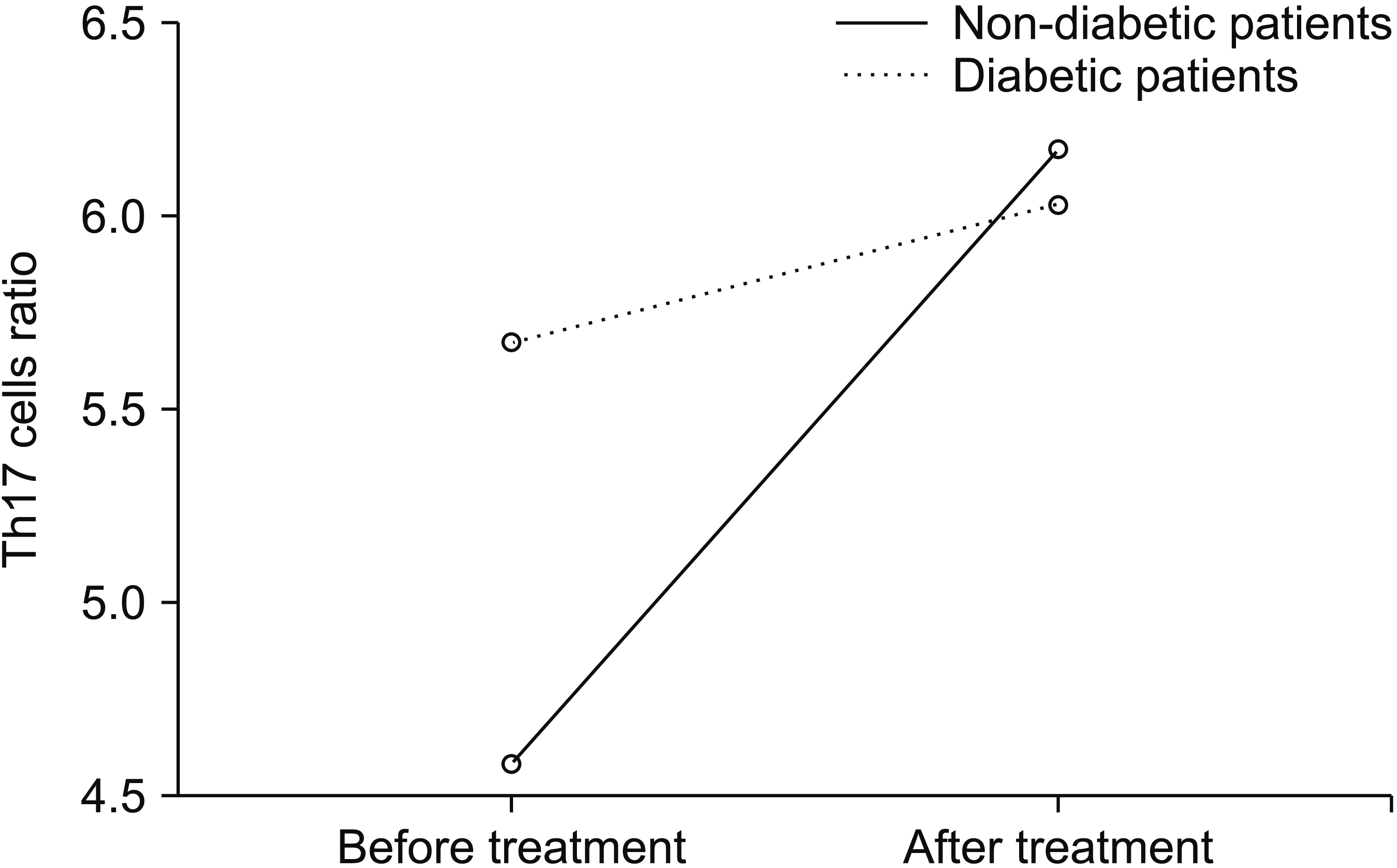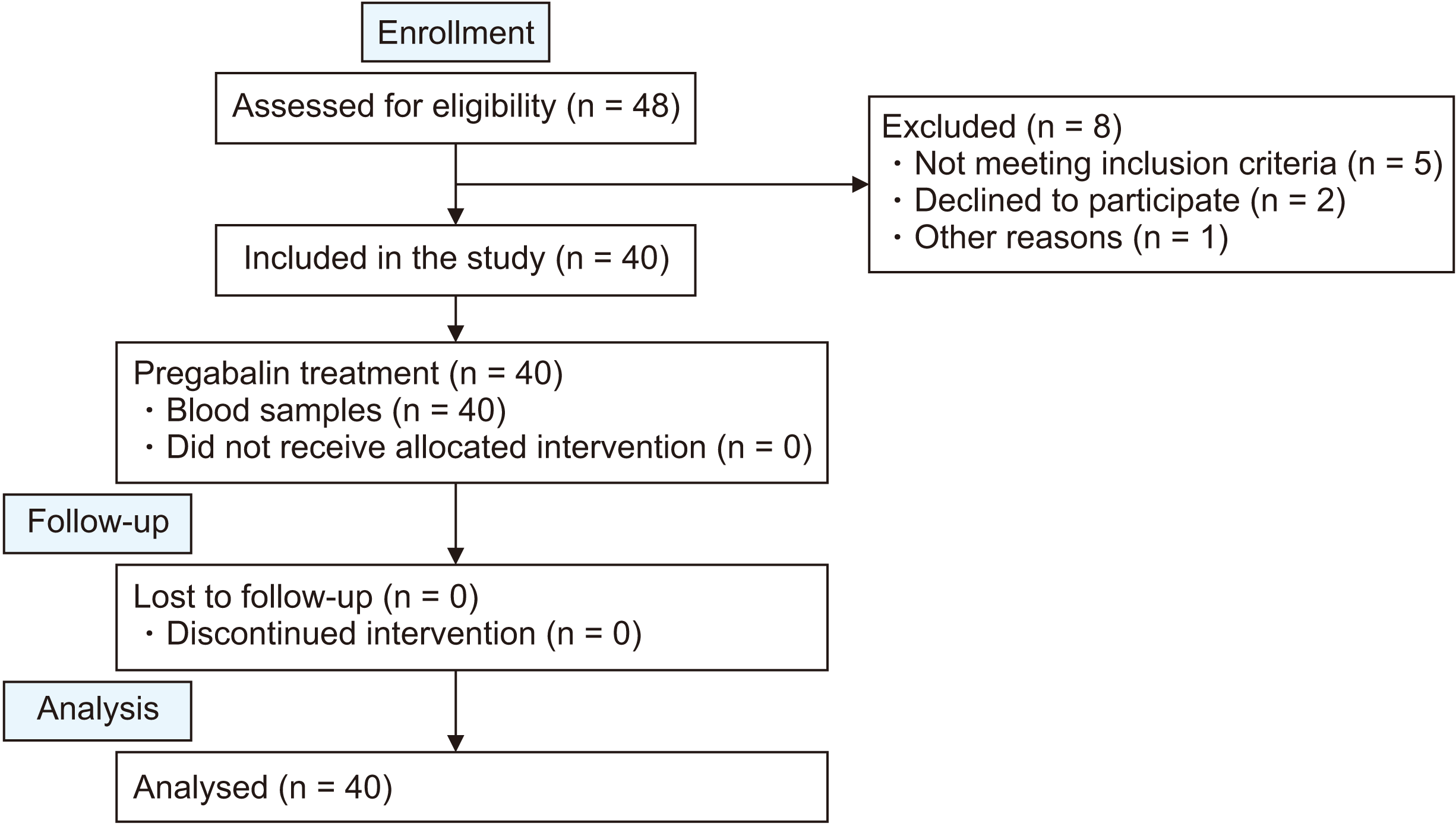1. Toth C, Lander J, Wiebe S. 2009; The prevalence and impact of chronic pain with neuropathic pain symptoms in the general population. Pain Med. 10:918–29. DOI:
10.1111/j.1526-4637.2009.00655.x. PMID:
19594844.

2. Tian L, Ma L, Kaarela T, Li Z. 2012; Neuroimmune crosstalk in the central nervous system and its significance for neurological diseases. J Neuroinflammation. 9:155. DOI:
10.1186/1742-2094-9-155. PMID:
22747919. PMCID:
PMC3410819.

3. Calvo M, Dawes JM, Bennett DL. 2012; The role of the immune system in the generation of neuropathic pain. Lancet Neurol. 11:629–42. DOI:
10.1016/S1474-4422(12)70134-5. PMID:
22710756.

7. Opstelten W, McElhaney J, Weinberger B, Oaklander AL, Johnson RW. 2010; The impact of varicella zoster virus: chronic pain. J Clin Virol. 48 Suppl 1:S8–13. DOI:
10.1016/S1386-6532(10)70003-2. PMID:
20510265.

8. Hadley GR, Gayle JA, Ripoll J, Jones MR, Argoff CE, Kaye RJ, et al. 2016; Post-herpetic neuralgia: a review. Curr Pain Headache Rep. 20:17. DOI:
10.1007/s11916-016-0548-x. PMID:
26879875.

9. Yawn BP, Saddier P, Wollan PC, St Sauver JL, Kurland MJ, Sy LS. 2007; A population-based study of the incidence and complication rates of herpes zoster before zoster vaccine introduction. Mayo Clin Proc. 82:1341–9. DOI:
10.4065/82.11.1341. PMID:
17976353.

10. Drolet M, Brisson M, Schmader K, Levin M, Johnson R, Oxman M, et al. 2010; Predictors of postherpetic neuralgia among patients with herpes zoster: a prospective study. J Pain. 11:1211–21. DOI:
10.1016/j.jpain.2010.02.020. PMID:
20434957.

11. Bayat A, Burbelo PD, Browne SK, Quinlivan M, Martinez B, Holland SM, et al. 2015; Anti-cytokine autoantibodies in postherpetic neuralgia. J Transl Med. 13:333. DOI:
10.1186/s12967-015-0695-6. PMID:
26482341. PMCID:
PMC4617715.

12. Luchting B, Rachinger-Adam B, Heyn J, Hinske LC, Kreth S, Azad SC. 2015; Anti-inflammatory T-cell shift in neuropathic pain. J Neuroinflammation. 12:12. DOI:
10.1186/s12974-014-0225-0. PMID:
25608762. PMCID:
PMC4308022.

13. Kiguchi N, Kobayashi D, Saika F, Matsuzaki S, Kishioka S. 2017; Pharmacological regulation of neuropathic pain driven by inflammatory macrophages. Int J Mol Sci. 18:2296. DOI:
10.3390/ijms18112296. PMID:
29104252. PMCID:
PMC5713266.

14. Zhu SM, Liu YM, An ED, Chen QL. 2009; Influence of systemic immune and cytokine responses during the acute phase of zoster on the development of postherpetic neuralgia. J Zhejiang Univ Sci B. 10:625–30. DOI:
10.1631/jzus.B0920049. PMID:
19650202. PMCID:
PMC2722705.

15. Kim CF, Moalem-Taylor G. 2011; Interleukin-17 contributes to neuroinflammation and neuropathic pain following peripheral nerve injury in mice. J Pain. 12:370–83. DOI:
10.1016/j.jpain.2010.08.003. PMID:
20889388.

17. Lees JG, Duffy SS, Perera CJ, Moalem-Taylor G. 2015; Depletion of Foxp3+ regulatory T cells increases severity of mechanical allodynia and significantly alters systemic cytokine levels following peripheral nerve injury. Cytokine. 71:207–14. DOI:
10.1016/j.cyto.2014.10.028. PMID:
25461400.

18. Xing Q, Hu D, Shi F, Chen F. 2013; Role of regulatory T cells in patients with acute herpes zoster and relationship to postherpetic neuralgia. Arch Dermatol Res. 305:715–22. DOI:
10.1007/s00403-013-1367-0. PMID:
23689682.

20. Ren K, Dubner R. 2010; Interactions between the immune and nervous systems in pain. Nat Med. 16:1267–76. DOI:
10.1038/nm.2234. PMID:
20948535. PMCID:
PMC3077564.

21. Davoli-Ferreira M, de Lima KA, Fonseca MM, Guimarães RM, Gomes FI, Cavallini MC, et al. 2020; Regulatory T cells counteract neuropathic pain through inhibition of the Th1 response at the site of peripheral nerve injury. Pain. 161:1730–43. DOI:
10.1097/j.pain.0000000000001879. PMID:
32701834.

23. Draleau K, Maddula S, Slaiby A, Nutile-McMenemy N, De Leo J, Cao L. 2014; Phenotypic identification of spinal cord-infiltrating CD4+ T lymphocytes in a murine model of neuropathic pain. J Pain Relief. Suppl 3:003. DOI:
10.4172/2167-0846.S3-003. PMID:
25143871. PMCID:
PMC4136538.

24. Sah DW, Ossipo MH, Porreca F. 2003; Neurotrophic factors as novel therapeutics for neuropathic pain. Nat Rev Drug Discov. 2:460–72. DOI:
10.1038/nrd1107. PMID:
12776221.

25. Kobayashi Y, Kiguchi N, Fukazawa Y, Saika F, Maeda T, Kishioka S. 2015; Macrophage-T cell interactions mediate neuropathic pain through the glucocorticoid-induced tumor necrosis factor ligand system. J Biol Chem. 290:12603–13. DOI:
10.1074/jbc.M115.636506. PMID:
25787078. PMCID:
PMC4432281.

26. Kiguchi N, Kobayashi Y, Saika F, Sakaguchi H, Maeda T, Kishioka S. 2015; Peripheral interleukin-4 ameliorates inflammatory macrophage-dependent neuropathic pain. Pain. 156:684–93. DOI:
10.1097/j.pain.0000000000000097. PMID:
25630024.

27. Hao S, Mata M, Glorioso JC, Fink DJ. 2006; HSV-mediated expression of interleukin-4 in dorsal root ganglion neurons reduces neuropathic pain. Mol Pain. 2:6. DOI:
10.1186/1744-8069-2-6. PMID:
16503976. PMCID:
PMC1395302.

28. Sorge RE, Mapplebeck JC, Rosen S, Beggs S, Taves S, Alexander JK, et al. 2015; Different immune cells mediate mechanical pain hypersensitivity in male and female mice. Nat Neurosci. 18:1081–3. DOI:
10.1038/nn.4053. PMID:
26120961. PMCID:
PMC4772157.

29. Austin PJ, Kim CF, Perera CJ, Moalem-Taylor G. 2012; Regulatory T cells attenuate neuropathic pain following peripheral nerve injury and experimental autoimmune neuritis. Pain. 153:1916–31. DOI:
10.1016/j.pain.2012.06.005. PMID:
22789131.

30. Langley RG, Elewski BE, Lebwohl M, Reich K, Griffiths CE, Papp K, et al. 2014; Secukinumab in plaque psoriasis--results of two phase 3 trials. N Engl J Med. 371:326–38. DOI:
10.1056/NEJMoa1314258. PMID:
25007392.

31. Attal N, Cruccu G, Baron R, Haanpää M, Hansson P, Jensen TS, et al. 2010; EFNS guidelines on the pharmacological treatment of neuropathic pain: 2010 revision. Eur J Neurol. 17:1113–e88. DOI:
10.1111/j.1468-1331.2010.02999.x. PMID:
20402746.

32. Tesfaye S, Boulton AJ, Dyck PJ, Freeman R, Horowitz M, Kempler P, et al. 2010; Diabetic neuropathies: update on definitions, diagnostic criteria, estimation of severity, and treatments. Diabetes Care. 33:2285–93. DOI:
10.2337/dc10-1303. PMID:
20876709. PMCID:
PMC2945176.

35. Higa K, Noda B, Manabe H, Sato S, Dan K. 1992; T-lymphocyte subsets in otherwise healthy patients with herpes zoster and relationships to the duration of acute herpetic pain. Pain. 51:111–8. DOI:
10.1016/0304-3959(92)90015-4. PMID:
1454393.

36. Asanuma H, Sharp M, Maecker HT, Maino VC, Arvin AM. 2000; Frequencies of memory T cells specific for varicella-zoster virus, herpes simplex virus, and cytomegalovirus by intracellular detection of cytokine expression. J Infect Dis. 181:859–66. DOI:
10.1086/315347. PMID:
10720505.

37. Austin PJ, Moalem-Taylor G. 2010; The neuro-immune balance in neuropathic pain: involvement of inflammatory immune cells, immune-like glial cells and cytokines. J Neuroimmunol. 229:26–50. DOI:
10.1016/j.jneuroim.2010.08.013. PMID:
20870295.

38. Kohm AP, McMahon JS, Podojil JR, Begolka WS, DeGutes M, Kasprowicz DJ, et al. 2006; Cutting Edge: anti-CD25 monoclonal antibody injection results in the functional inactivation, not depletion, of CD4+CD25+ T regulatory cells. J Immunol. 176:3301–5. DOI:
10.4049/jimmunol.176.6.3301. PMID:
16517695.

39. Suntharalingam G, Perry MR, Ward S, Brett SJ, Castello-Cortes A, Brunner MD, et al. 2006; Cytokine storm in a phase 1 trial of the anti-CD28 monoclonal antibody TGN1412. N Engl J Med. 355:1018–28. DOI:
10.1056/NEJMoa063842. PMID:
16908486.

40. Abdel-Moneim A, Bakery HH, Allam G. 2018; The potential pathogenic role of IL-17/Th17 cells in both type 1 and type 2 diabetes mellitus. Biomed Pharmacother. 101:287–92. DOI:
10.1016/j.biopha.2018.02.103. PMID:
29499402.

41. Noma N, Khan J, Chen IF, Markman S, Benoliel R, Hadlaq E, et al. 2011; Interleukin-17 levels in rat models of nerve damage and neuropathic pain. Neurosci Lett. 493:86–91. DOI:
10.1016/j.neulet.2011.01.079. PMID:
21316418.

42. Kleinschnitz C, Hofstetter HH, Meuth SG, Braeuninger S, Sommer C, Stoll G. 2006; T cell infiltration after chronic constriction injury of mouse sciatic nerve is associated with interleukin-17 expression. Exp Neurol. 200:480–5. DOI:
10.1016/j.expneurol.2006.03.014. PMID:
16674943.






 PDF
PDF Citation
Citation Print
Print




 XML Download
XML Download